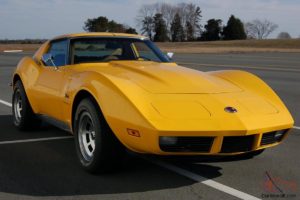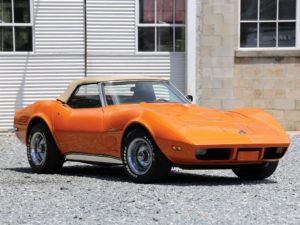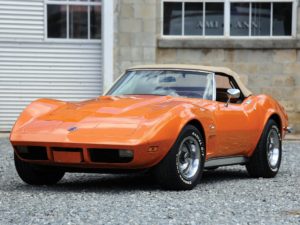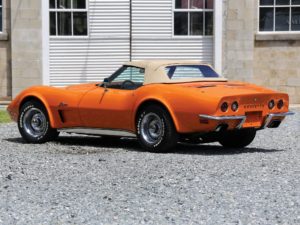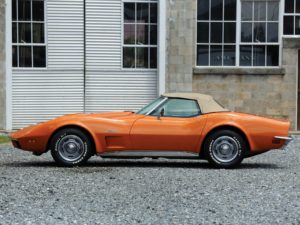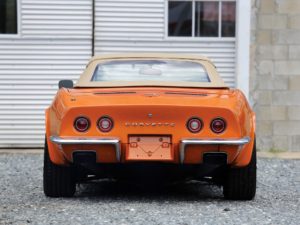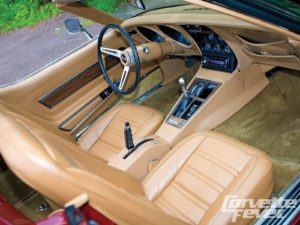Pricing: $5,561.50 (Coupe), $5,398.50 (Convertible)
Engine options: 350ci – 190HP Engine (standard), 350ci – 250HP Engine, 454ci – 275HP Engine
Transmission: 4-speed manual (standard), 4-speed manual (optional), 3-speed Turbo Hydra-Matic automatic (optional)
Top speed: 136mph
Units Produced: 30,464
Available Colors: Classic White, Silver, Medium Blue, Dark Blue, Blue-Green, Elkhart Green, Yellow, Metallic Yellow, Mille Miglia Red, Orange
Highlights of the year:
It is perhaps ironic then that the 1973 Corvette, which would celebrate the 20th anniversary of Corvette’s introduction by Harley Earl in 1953, would also be the first re-design of the C3 since its introduction in 1968
The changes to the 1973 Corvette, especially when compared to the earlier C3 models, was obvious. For 1973, the Corvette received a new nose treatment on both the coupe and convertible models. The nose was longer (by about two inches), slightly heavier (by about thirty-five pounds), and featured a steel bumper that was covered by deformable urethane plastic that was matched to the body color of the rest of the car.
Although this new nose was the first major appearance change since the introduction of the C3 in 1968, the design was more than just a cosmetic enhancement. To the contrary, the new nose was one of the first examples in engineering design where the styling was dictated by function
The rest of the front end saw other modifications to their earlier design as well. The 1973 Corvette front fender molds were made to incorporate a simple, recessed air vent design on each side of the car in lieu of the separate cast vent grilles that had been seen on the 1970–1972 models
Still, another performance enhancement that was included (though not Federally mandated) was the introduction of standard radial-ply tires. By using radial-ply tires, engineers were able to achieve longer tread wear, better wet-weather grip, and added stability when operating the Corvette at speed. At the same time, there was a tradeoff for using radial-ply tires. For one, the new Corvette demonstrated longer stopping distances despite the fact that the 1973 Corvette’s braking system went unchanged from the previous year. Additionally, the new radial-ply tires had lower lateral-G figures on the skidpad and were rated to operate a maximum speed of just 120 miles per hour.
While concerns about engine noise were certainly addressed, concerns about engine performance continued to linger. For the 1973 model year, federal regulations again emasculated the performance capabilities of every Corvette engine, including the optional upgrades. For the first time since 1956, Chevrolet did not offer a mechanical-lifter engine in the Corvette line. Instead, a choice of three hydraulic lifted units were available.
During its first six years of development, the C3 Corvette had been transformed from the apogee of high performance represented by the ZL-1 in 1968 to a vehicle more recognized for its higher level of luxury, as portrayed in the 1973 model. While these extremes made many enthusiasts and critics alike begin to debate what kind of car the Corvette should be, it was this same debate that had fueled the continuation of the Corvette since its introduction in 1953.
Photos of the 1973 Corvette:
Sources:
https://www.corvsport.com/1973-c3-corvette-image-gallery/
https://www.corvsport.com/1973-c3-corvette-image-gallery/
